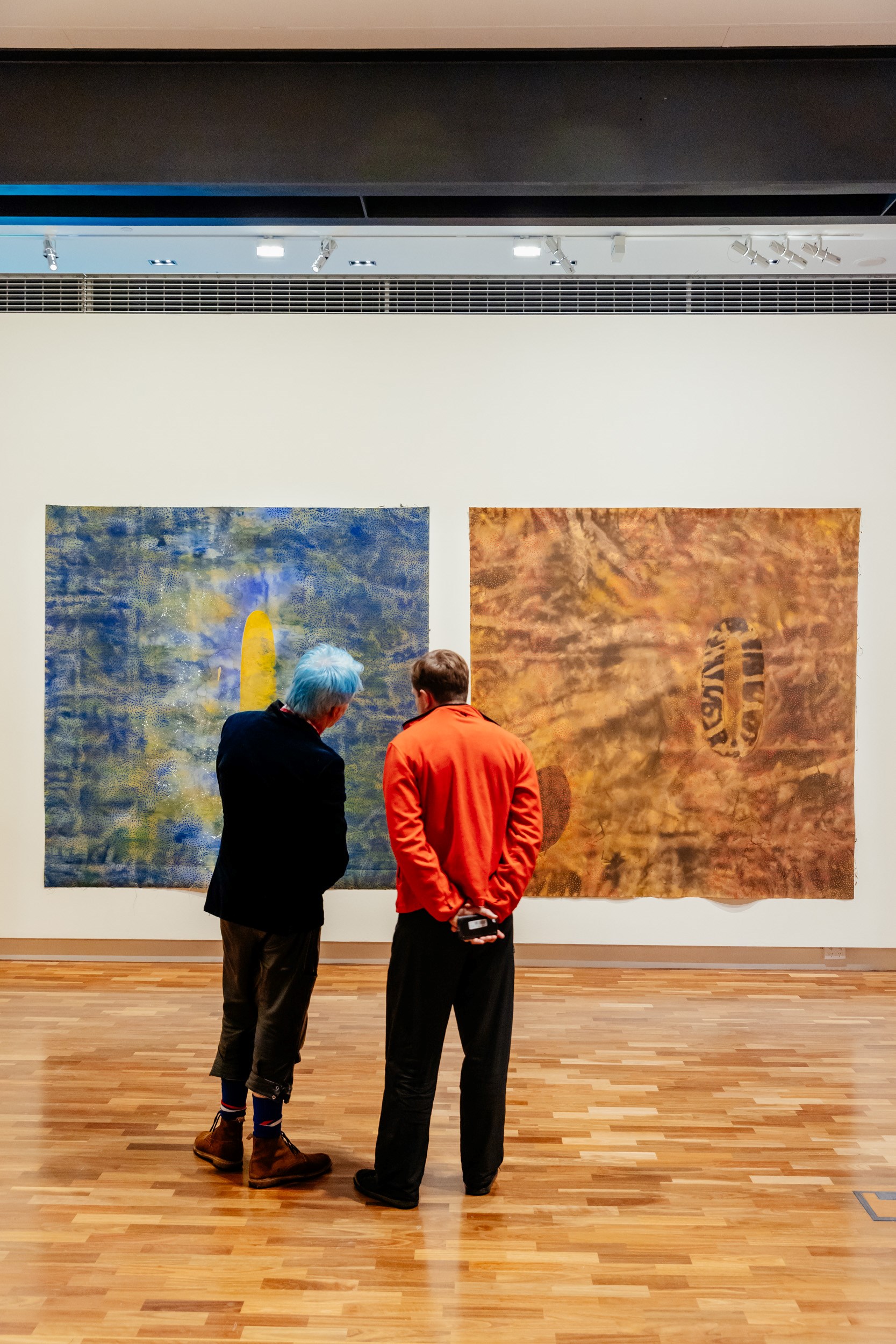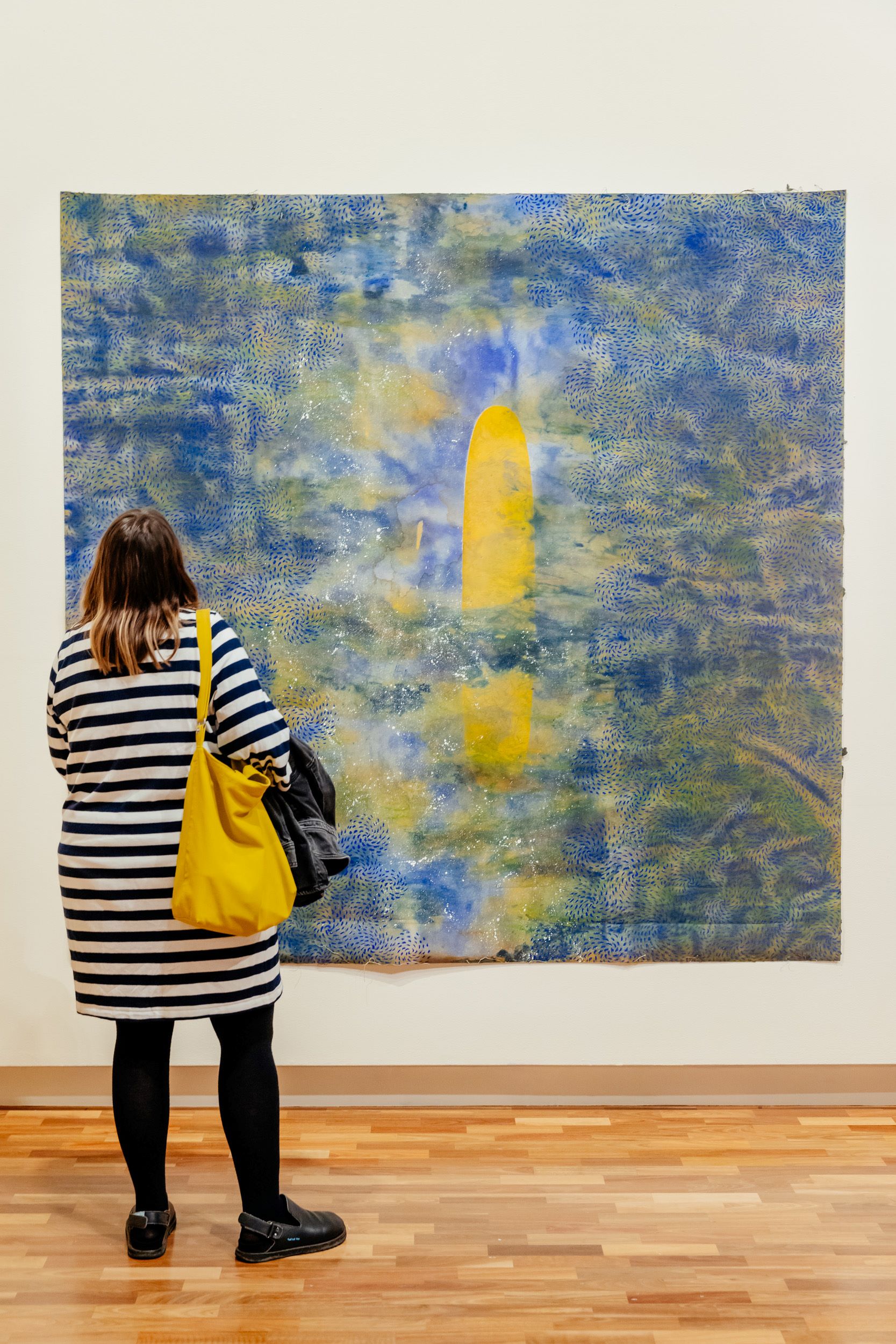
Artist Dr Judy Watson (b. 1959) lives and works in Meanjin/Brisbane and maintains an extensive practice spanning painting, drawing, printmaking and sculpture. Watson’s work is deeply rooted in themes relating to Aboriginal history and culture and is informed by her matrilineal heritage from Waanyi Country in northwest Queensland. By engaging with archival research, Watson’s practice serves as a powerful inquiry into the notions of collective memory, unveiling the concealed histories of institutionalised discrimination against Aboriginal people.
Two large-scale works by Watson, “sacred water”, 2010, and “sacred ground”, 2010, were donated to The University of Queensland Art Collection by Danielle Milani through the Australian Government’s Cultural Gifts Program, in memory of Mona Dubois. Currently displayed in the UQ Art Museum’s “Mare Amoris | Sea of Love” exhibition, these artworks inspire conversations about Indigenous water rights and challenge colonial boundaries placed upon oceans and their connected waters.
Judy Watson’s artwork “sacred water” is a gesture of respect and care for Waanyi Country. Unbound by framing, the fluid movement of the canvas alludes to the waters of the artist’s matrilineal Waanyi heritage, who are known as “running water people.” Within the arid landscape of Waanyi Country, there are significant water sites including Boodjamulla Lawn Hill Gorge, along with the many creeks and rivers that are fed by springs rising from ancient subterranean aquifers.
“sacred water” is an ode to the waters that have sustained Watson’s ancestors as nourishment and have strengthened her sense of belonging and identity. Water has been a source of inspiration physically and metaphorically for the artist. As Watson reflects:
When I am immersed in water, I think more deeply and I am connected to the wellsprings of my ancestral Country. Water is the conduit for everything that I do; it brings life and is the precious jewel beneath the surface. It feeds the Country that replenishes the people.
The artist's tribute to the land of her ancestors extends to the artwork “sacred ground”. The rich brown and red ochres of the canvas suggest an aerial perspective of the dry, scorched earth of Waanyi Country. The artwork holds within it an aura of love and reverence, gracefully expressed through the deep and rich pigments.

The encompassing rings that stretch across the canvas mirror the springs of Waanyi Country, emerging from the depths of an artesian basin. The oval shape references the coolamon, a multi-use vessel in which to carry food or cradle infants that is often used in ceremony. The distinctly curved shape of the vessel embodies a divine femininity for the artist, connecting her to the matrilineal lineage of her ancestors. The shadow of a frond is indicative of the resilient plant life that flourishes despite arid conditions, particularly near swamps and waterways.
Displayed alongside “sacred water”, “sacred ground” weaves together the interconnected story of place, where the concepts of linear time dissolve upon the canvas. Together, these artworks emphasise that we exist in relational spaces, revealing that caring for one is inherently intertwined with caring for the other.
UQ Art Museum is grateful for the inclusion of these remarkable works, which were generously donated by Danielle Milani, in memory of Mona Dubois through the Australian Government’s Cultural Gifts Program in 2022.
Learn more about our current exhibition.
Visit the “Mare Amoris | Sea of Love” Accessibility Guide here.



